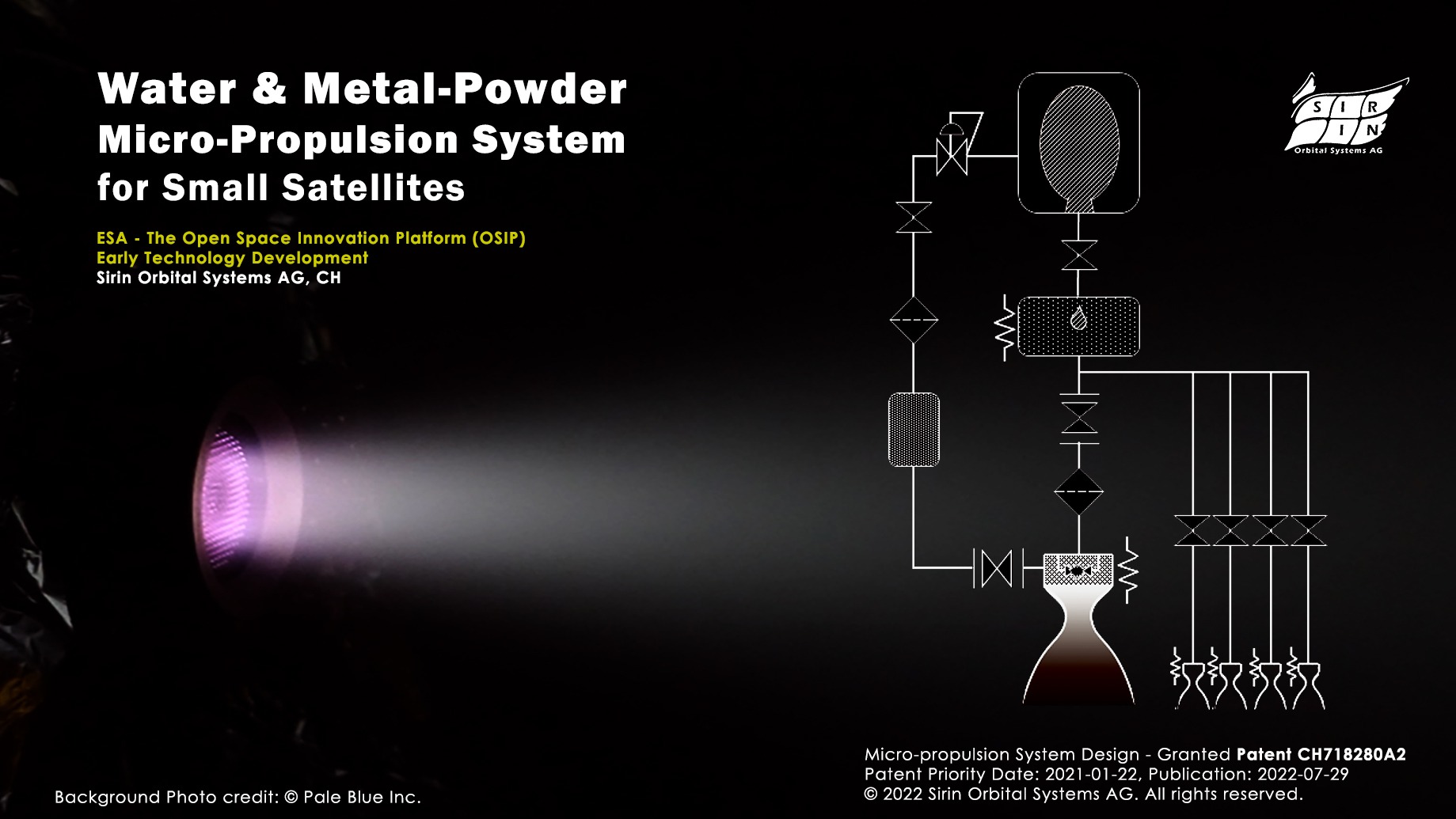The need for high-thrust propulsion systems compatible with small satellites for applications such as constellation deployment, orbit maintenance and stationkeeping is particularly emerging. A high-thrust propulsion system provides large velocity increments in a short time, which enables orbit transfer, orbital plane change, re-entry, and planetary orbit insertion for deep space exploration. We aim at the development of an innovative micro-propulsion system concept—patented by Sirin Orbital Systems AG (granted patent CH718280A2, priority: 2021-01-22, publication: 2022-07-29)—which uses a combination of water vapour and metal-powder (Al/Mg) as propellant for generating high thrust. The main differentiating advantages of the targeted product are (1) safe, non-toxic and non-hazardous propellant, (2) high-thrust despite compact footprint, (3) in-space availability of propellants. This micro-propulsion technology will expand the mission field of small satellites and is applicable for both commercial and scientific missions. It increases orbital agility and repositioning capacity of small satellites and provides in-orbit manoeuvring capabilities, e.g. course/fine orbit-correction, fast orbit-raising, and controlled re-entry. In addition, a high-thrust propulsion enables smalls satellites to perform efficient in-orbit servicing operations. As for scientific missions, it makes them capable of self-planetary orbit insertion for deep-space exploration and sample returns. It can be used for key applications such as telecommunications, space exploration and science missions, Earth observation and navigation. This technology is specifically applicable for nano-/microsatellites where the lack of a safe and robust high-thrust propulsion system is particularly felt. In this activity, we tackle identified technological challenges upfront the realisation of the full-system. Breadboard models for two main micro-propulsion subsystems will be built and validated up to ~ TRL4.

